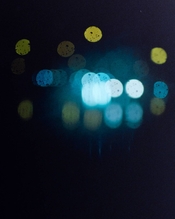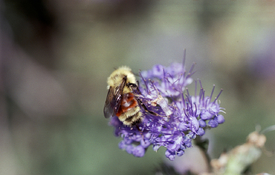Cholentpot
Member
- Joined
- Oct 26, 2015
- Messages
- 6,743
- Format
- 35mm
Yes, mind telling us what brand of driveway cleaner?
What is the pH of your driveway cleaner solution? I am reading Kodak ECN-2 instructions, says to adjust pH of pre-bath to 10.2. I wonder if a solution of sodium bicarbonate with a tiny amount of NaOH added to bring up pH?
Yes, mind telling us what brand of driveway cleaner?
When I mix it 10ml to 500ml of water it's around 11.8
I tried sodium carbonate ( soda ash, probably near what your mix would be ) which dissolved the remjet binder fine, just didn't wash it away well.
I'm using something called super clean which I can get at my local auto parts store. I would expect others would also work well.

Vision3/C-41 and the OP suggested developing at 106ºF (following their kit instructions at 102ºF lead to underdevelopment)
In search of a fresh bulk roll color negative film I've been thinking about trying Vision3 film but I was always scared of the remjet. This thread inspired me to give it a go!
I picked up a few rolls of Kodak Vision 250D and some driveway cleaner from Home Depot (Zep brand?) and got to work. I shot a test roll then developed it as usual in C-41 at 100ºF (3:15 dev, 6:30 bleach, 6:30 fix, wash for 5:00) and then dunked the reel in 1000ml of driveway cleaner remjet remover solution mixed 1:50 (20ml->1000ml water). Let it sit for 30s, then violently agitated, dumped it out, repeated, and then did a running water wash for another 5 minutes. I was really surprised at how well the cleaner worked! The film was spotless aside from some hard water drying marks because I didn't bother to mix up a final rinse.
Even though I scan everything the RA-4 darkroom print is always my end goal, and it's also a good check on process (bad film dev=bad prints). I printed the contact sheet and balanced it as well as I could for the color checker shots (in studio, daylight windows bracketed at ISO 125, 250, 500, box speed 250 seemed correct). The film definitely has some crossover, magenta/red shadows and green/cyan highlights. Appears to me the film was under temp. I went ahead and printed a portrait to confirm, and though the results aren't horrible I am not satisfied. I did some googling and there's a Flickr thread from a few years ago regarding Vision3/C-41 and the OP suggested developing at 106ºF (following their kit instructions at 102ºF lead to underdevelopment). I'm going to run through a few more rolls and try to develop at 103ºF, 104ºF, and 105ºF. Hopefully from there I'll be able to narrow down a proper temperature.
One thing to note, though the driveway cleaner cleared the remjet from the film there was still a bit of debris left on my reels and in my tanks. Almost like a very fine dust. Not much, and I highly doubt it will mess anything up in the future but I'll probably end up dedicating one tank and one set of reels to remjet films if I continue this long term.
One thing to note, though the driveway cleaner cleared the remjet from the film there was still a bit of debris left on my reels and in my tanks. Almost like a very fine dust. Not much, and I highly doubt it will mess anything up in the future but I'll probably end up dedicating one tank and one set of reels to remjet films if I continue this long term.
There's a couple of things you could play with:
* Reduce temperature
* Shorten development
* Adjust pH downward
* Dilute developer
In search of a fresh bulk roll color negative film I've been thinking about trying Vision3 film but I was always scared of the remjet. This thread inspired me to give it a go!
I picked up a few rolls of Kodak Vision 250D and some driveway cleaner from Home Depot (Zep brand?) and got to work. I shot a test roll then developed it as usual in C-41 at 100ºF (3:15 dev, 6:30 bleach, 6:30 fix, wash for 5:00) and then dunked the reel in 1000ml of driveway cleaner remjet remover solution mixed 1:50 (20ml->1000ml water). Let it sit for 30s, then violently agitated, dumped it out, repeated, and then did a running water wash for another 5 minutes. I was really surprised at how well the cleaner worked! The film was spotless aside from some hard water drying marks because I didn't bother to mix up a final rinse.
Even though I scan everything the RA-4 darkroom print is always my end goal, and it's also a good check on process (bad film dev=bad prints). I printed the contact sheet and balanced it as well as I could for the color checker shots (in studio, daylight windows bracketed at ISO 125, 250, 500, box speed 250 seemed correct). The film definitely has some crossover, magenta/red shadows and green/cyan highlights. Appears to me the film was under temp. I went ahead and printed a portrait to confirm, and though the results aren't horrible I am not satisfied. I did some googling and there's a Flickr thread from a few years ago regarding Vision3/C-41 and the OP suggested developing at 106ºF (following their kit instructions at 102ºF lead to underdevelopment). I'm going to run through a few more rolls and try to develop at 103ºF, 104ºF, and 105ºF. Hopefully from there I'll be able to narrow down a proper temperature.
One thing to note, though the driveway cleaner cleared the remjet from the film there was still a bit of debris left on my reels and in my tanks. Almost like a very fine dust. Not much, and I highly doubt it will mess anything up in the future but I'll probably end up dedicating one tank and one set of reels to remjet films if I continue this long term.
I remember from the days many years ago when I printed colour negatives on Ektacolor 37 RC and Ektacolor 74 RC paper that touching a print, wet or dry, with even the slightest trace of acetic acid on the fingers would cause pink fingerprints on the print. I don't know if it would affect colour negative materials.If there is, I can't recall; it's been a while since I delved into the chemistry for this. I do recall there was a possible problem with dichroic fog with certain combinations, but I really don't recall, sorry.
@brbo those look great, nice job!
@mshchem I'm using an LPL 4500 with the Heiland LED unit
Slightly off topic, but it’s relevant so bear with me. How's the Heiland head work for RA-4 printing? I don't recall hearing from anyone who is using these nice heads for color. I know folks love these for VC black and white.
The Vision3 stocks are a phenomenal line of films once one can effectively deal with the remjet during processing. I've gone through several iterations of remjet handling as I've honed my ECN-2 processing:
1. No remjet-prebath (16mm only) with mechanical removal in trays at the end of the process. Messy -- dense remjet can be easily embedded into the emulsion at this stage. Do not attempt with full loads of 35mm!
2. Sodium Bicarbonate pre-bath. Better, but still some residual emulsion contamination is possible.
3. Kodak's remjet pre-bath formula. Extremely effective AND re-usable, but does still require a post-process wipe to remove the last 1% of residue.
Switching to a 'real' pre-bath was a revelation as the remjet is only softened, not removed in the pre-bath. The still clean pre-bath solution returned to it's container after a 15-20 second soak and a subsequent water wash or two does the actual removal. The high concentration of neutral sulfate in the pre-bath prevents the remjet layer from immediately disintegrating into the solution.
I have extremely limited experience cross-processing ECN-2 stocks in C-41, but you can expect a slight speed boost, higher contrast, and slightly funkier colors. I'd recommend giving ECN-2 processing a try to see which you prefer.
Vision3 500T w/ 85B filter in daylight, ECN-2
View attachment 314134
I don't really understand why this is necessary, it clearly is since the Cine-Still films which have it removed show halation on things like neon signs.
So I decided to give my own try at Vision film. As a test I ordered a couple rolls of 50D ( I would prefer 250D for my uses but 50D was what I could get at the moment ). My first test was to remove the remjet. For this I clipped the leader off and recut the film so I could load it later.
I first tried the standard baking soda and water - this worked OK but left patches that needed to be rubbed off.
I thought about this a bit and decided to try good old driveway cleaner/degreaser. My only rational was something alkaline and I have used this on photo resist when I used to make my own PC boards.
I mixed 10ml of super clean in 500ml of water. This completely cleared the remjet without having to rub any residue off. I had no idea what it might do to the emulsion.
I put a roll through my camera loaded the film into my Jobo 1510 tank. I filled it with 250ml of the solution, let it soak for a minute, shook it hard for a minute, let it rotate for a minute and drained it. At this point I left it rotating on the processor and did two more fills ( @125ml ) for a minute each. This was followed by 4 water fills and dumps about a minute each. water was pretty clear after the second dump. I then processed normally per C41 process.
I looked at the film before dumping it in the stabilizer and saw no signs of remjet. After stabilizing, hung to dry.
Attached are some samples of the results, I am pleased, pleased enough I ordered a 400ft roll of 250D from Kodak ( along with 400ft of Ektachrome 100D ), both in stock.
For me, the remjet did not prove to be much of a problem. The 10ml in 500ml seemed pretty strong, I might reduce this to 5 in 500 and play with how much time film spends in it.
View attachment 314117 View attachment 314118 View attachment 314119
Thank you for your reply.I think that color films have anti-halation measures built into them as well. Black & white films also do, but generally not in 35mm format; on 120 and sheet film some kind of anti-halation dye is virtually always present.
Btw, the description you gave of the remjet processor matches the publicly available Kodak document that describes ECN-2 processing.
I'm not sure I agree with your statement that a continuous process would produce different results from a batch process as you'd run at home. Given good parameter control and fresh, one-shot or otherwise properly replenished developer, the results really should be identical. With C41 as well as E6, this is within range of an amateur working at home; I don't see how this would be different for ECN-2.
If the reason that rem-jet is used rather than dyes on motion picture stocks is for its lubrication and anti-static properties then why is it not also used on 5222 stock?
I have noticed that roll films tend to release dyes when processed more than 35 mm; do you know the reason for this?
So I decided to give my own try at Vision film. As a test I ordered a couple rolls of 50D ( I would prefer 250D for my uses but 50D was what I could get at the moment ). My first test was to remove the remjet. For this I clipped the leader off and recut the film so I could load it later.
I first tried the standard baking soda and water - this worked OK but left patches that needed to be rubbed off.
I thought about this a bit and decided to try good old driveway cleaner/degreaser. My only rational was something alkaline and I have used this on photo resist when I used to make my own PC boards.
I mixed 10ml of super clean in 500ml of water. This completely cleared the remjet without having to rub any residue off. I had no idea what it might do to the emulsion.
I put a roll through my camera loaded the film into my Jobo 1510 tank. I filled it with 250ml of the solution, let it soak for a minute, shook it hard for a minute, let it rotate for a minute and drained it. At this point I left it rotating on the processor and did two more fills ( @125ml ) for a minute each. This was followed by 4 water fills and dumps about a minute each. water was pretty clear after the second dump. I then processed normally per C41 process.
I looked at the film before dumping it in the stabilizer and saw no signs of remjet. After stabilizing, hung to dry.
Attached are some samples of the results, I am pleased, pleased enough I ordered a 400ft roll of 250D from Kodak ( along with 400ft of Ektachrome 100D ), both in stock.
For me, the remjet did not prove to be much of a problem. The 10ml in 500ml seemed pretty strong, I might reduce this to 5 in 500 and play with how much time film spends in it.
View attachment 314117 View attachment 314118 View attachment 314119
If the reason that rem-jet is used rather than dyes on motion picture stocks is for its lubrication and anti-static properties then why is it not also used on 5222 stock?
I have noticed that roll films tend to release dyes when processed more than 35 mm; do you know the reason for this?










| Photrio.com contains affiliate links to products. We may receive a commission for purchases made through these links. To read our full affiliate disclosure statement please click Here. |
PHOTRIO PARTNERS EQUALLY FUNDING OUR COMMUNITY:  |


